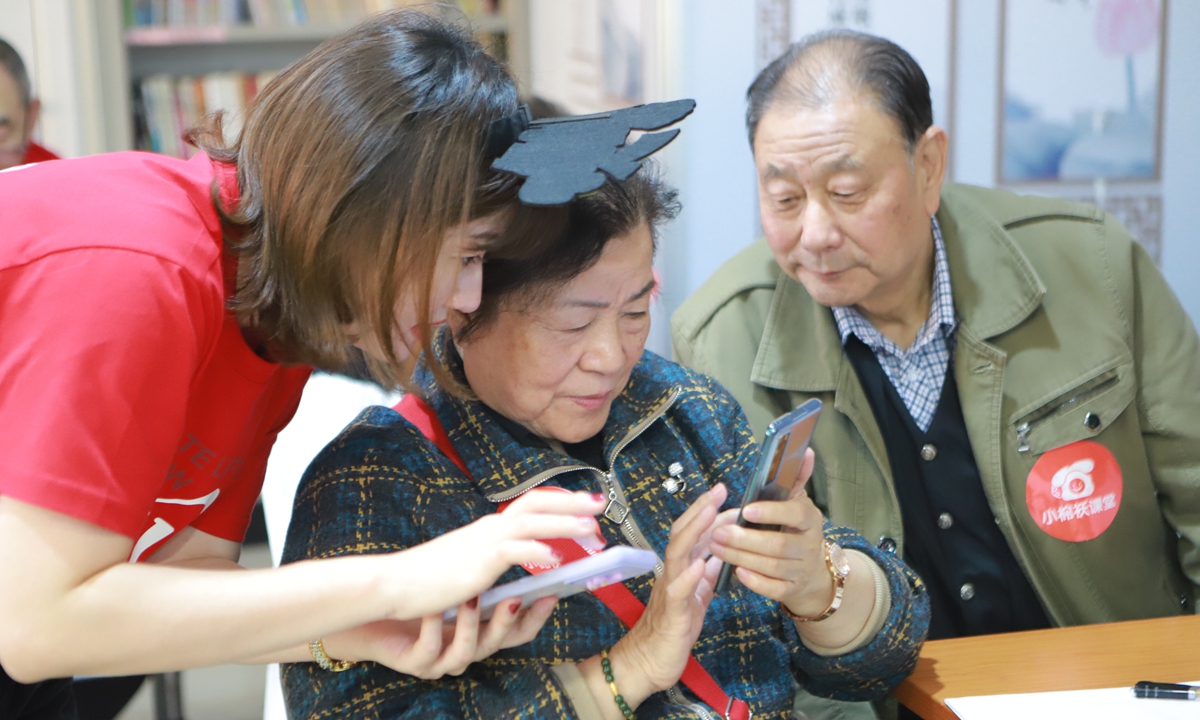
Volunteers in Beijing teach elderly people how to use smartphones. Photo: Xinhua
Beijing's elderly population (individuals aged 60 and over) has reached 4.651 million, an increase of 5.3 percent compared to 2021, which is the highest increase in five years, according to the 2022 census, the Beijing Daily reported on Sunday.
In 2022, the proportion of Beijing's population aged 60 and above reached 21.3 percent, continuing to rise after surpassing 20 percent for the first time in 2021, according to the recently released overview of Beijing's aging situation.
The ageing of Beijing's population continues to rise, with the proportion of the elderly population 1.5 percent higher than the national average. The overview also reveals that the city's overall aging is characterized by rapid development, older age, a majority female population, uneven development and a heavy burden of social support.
In terms of permanent residents population, 3.301 million in Beijing are aged 65 and above, accounting for 15.1 percent of the total population, an increase of 185,000 from 2021.
In terms of the household registered population in Beijing, the development of aging is even more significant.
According to the 2022 census, 29 percent of the population under household registry in Beijing is aged 60 and over. 21.1 percent of the population is aged 65 and over. 16.9 percent is aged 80 and over, setting the highest yearly increase over the past 10 years.
The number of centenarians in the city also reached a new high of 1,629, an increase of 212 compared to 2021.
The overview also shows that 2022 has seen the highest increase in the number and growth of the city's elderly population in the last 10 years, leading to an increase in the city's social dependency burden.
The city's old-age dependency ratio continues to rise, experiencing the largest increase in the last 10 years. The ratio stands at 51.1 percent in 2022, meaning an elderly resident is supported by approximately two working-age residents, an increase of 3.8 percent from the previous year.
Overall, Beijing's growth rate of the old-age dependency ratio is higher than that of the youth dependency ratio.
As of the end of 2022, the number of people covered by the basic pension for enterprise employees and basic medical insurance for urban employees in Beijing was 17.642 million and 14.962 million respectively. The number of people covered by pension security for urban and rural residents and basic medical insurance for urban and rural residents was 1.876 million and 4.0440 million respectively.
Beijing has initially established a new pattern based on the three pillars of social pension, corporate pension and personal pension in parallel, along with a diversified supply of commercial pension insurance. Furthermore, the level of social security for the elderly has been further improved, according to authorities.
In 2022, the birth rate of Beijing's resident population was 5.67 per thousand, the death rate was 5.72 per thousand, and the natural growth rate was -0.05 per thousand.
Global Times




